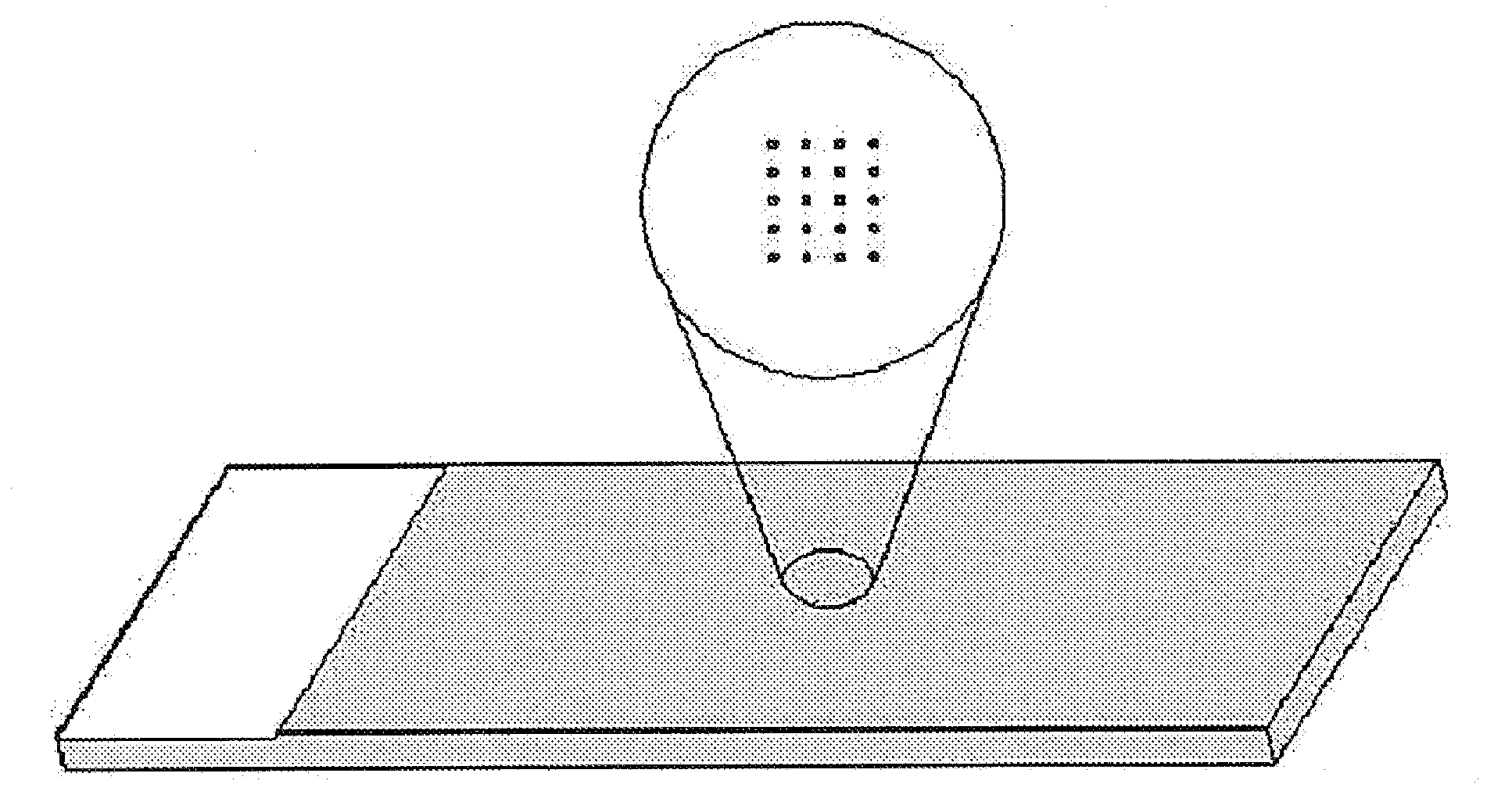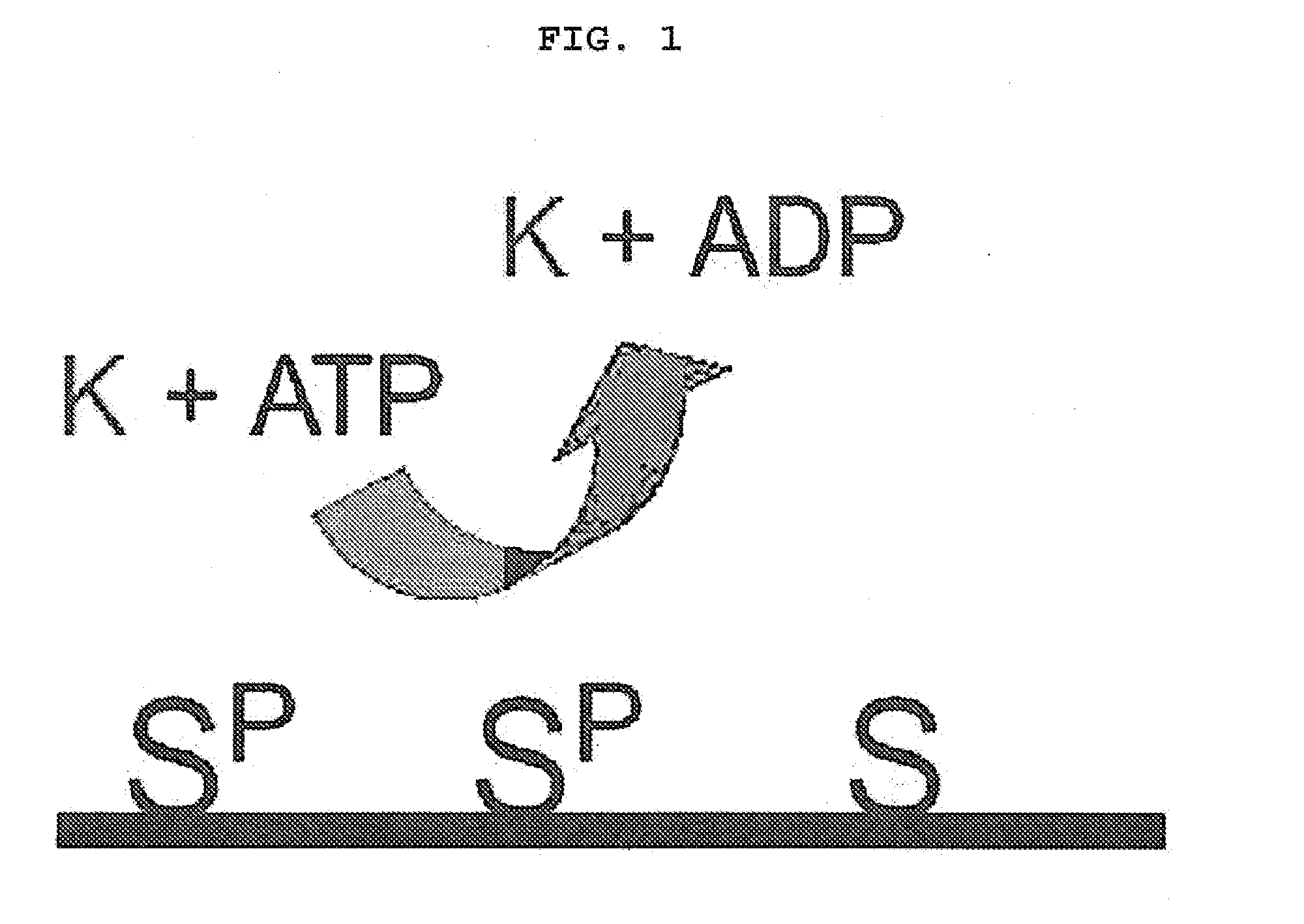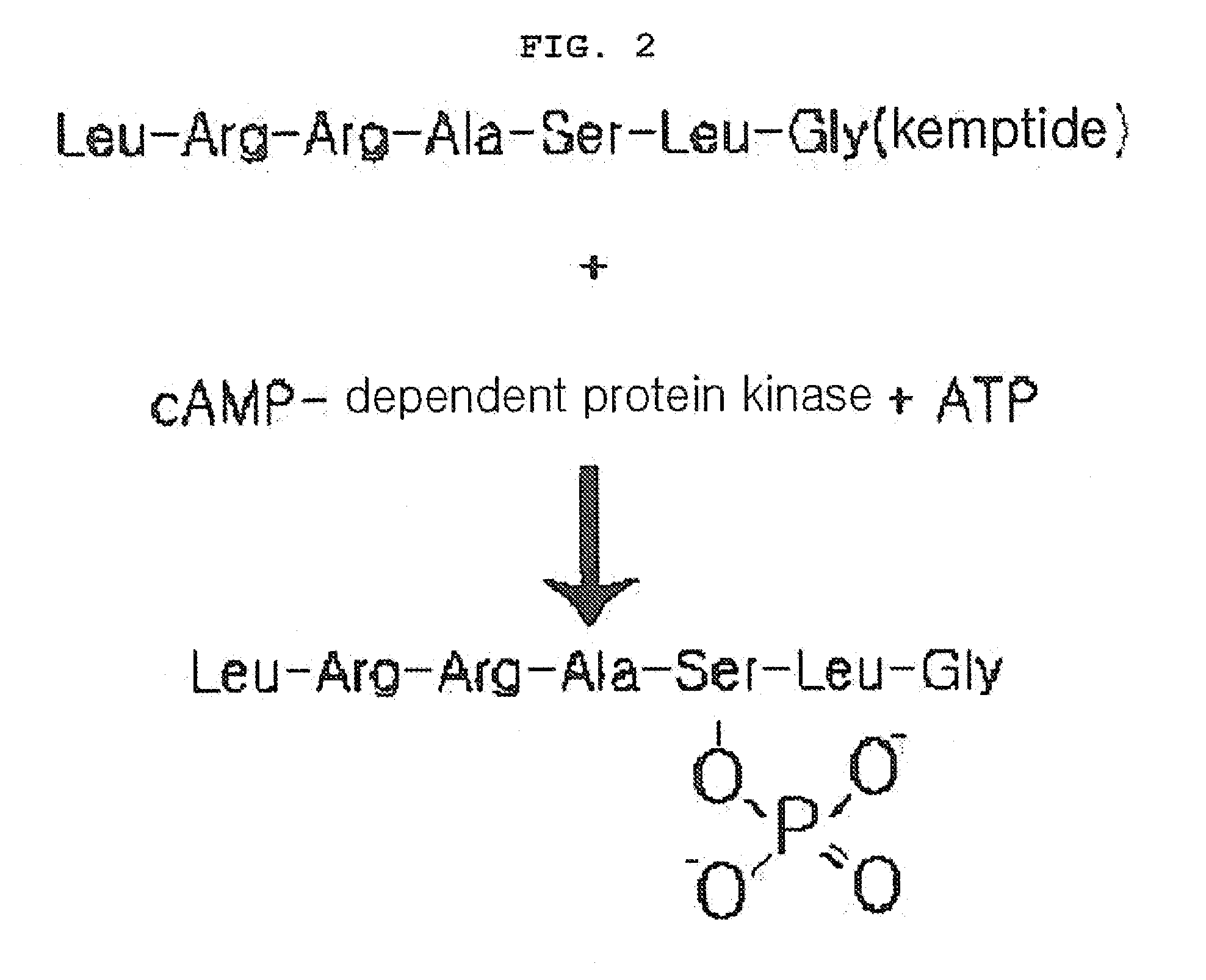The biochip for the detection of phosphorylation and the detection method using the same
a biochip and phosphorylation technology, applied in biochemistry apparatus and processes, instruments, library screening, etc., can solve the problems of difficult to tell which analysis method is the most appropriate, method progress is very slow, and the market of such biochips will be huge, so as to achieve the effect of measuring phosphorylation faster
- Summary
- Abstract
- Description
- Claims
- Application Information
AI Technical Summary
Benefits of technology
Problems solved by technology
Method used
Image
Examples
example 1
Preparation of Malic Enzyme-Kemptide Fusion Protein
Cloning of E. Coli Malic Enzyme-Kemptide Fusion Protein
[0085]To produce E. coli malic enzyme kemptide fusion recombinant protein, a novel strain was first generated.
[0086]To amplify sfcA gene (malic enzyme) of E. coli, PCR was performed by using the chromosomal DNA of E. coli W3110 as a template with a sense (5′ CATGCCATGGGCATCACCATCATCACCATGATATTCAAAAAAGAGTG; SEQ. ID. NO: 1) and an antisense (5′-GCTCTAGATTAGCCCAGGCTCGCACGACGCAGGATGGAGGCGGTA; SEQ. ID. NO: 2) primers. PCR was performed with 2.0 unit Taq DNA polymerase (50 mM KCl, 10 mM Tris-HCl, pH 9.0, 1.5 mM MgCl2, 0.01% gelatin, 0.1% Triton X-100), 0.4 mM dNTP and the above primers using Palm-cycler (Corbett Life Science, USA) as follows; predenaturation at 94° C. for 5 minutes, denaturation at 94° C. for 1 minute, annealing at 55° C. for 1 minute, polymerization at 72° C. for 1 minute, 30 cycles from denaturation to polymerization, and final extension at 72° C. for 5 minutes. Th...
example 2
Preparation of Biochip
[0088]First, kemptide (Promega, Madison, Wis.) or malic enzyme-kemptide fusion protein was fixed on a slid glass as a substrate. Particularly, kemptide was dissolved in kemptide solution (10% glycerol, 60% PBS, pH 7.5) at the concentration of 0.1 mg / ml and this substrate solution was integrated on the aldehyde coated slid glass by using a microarrayer [Affymetrix 417 Arrayer (Takara Shuzo, Japan)] with leaving 300 μm distance between spots (2500 / 1 cm2). The malic enzyme-kemptide prepared in Example 1 was also integrated on the slid glass with leaving 300 μm distance between spots (2500 / 1 cm2). At this time, the size of each spot was 50 μm.
[0089]The biochip integrated with substrate as described above was fixed in a 30° C. humid chamber for one hour.
example 3
Determination of Kinase-Substrate Reaction Conditions
[0090]The biochip prepared in Example 2 was washed three times with washing buffer (2 mM KH2PO4, 1 mM Na2HPO4, 200 mM NaCl, 3 mM KCl, pH 7.5) and then reaction between the substrate and kinase was induced on the chip. Particularly, the chip was washed with kinase buffer (50 mM Tris-HCl, 10 mM MgCl2, pH 7.5) once and then pre-incubation was performed in the kinase buffer supplemented with 100 μM of ATP. 200 μl of kinase solution (kinase buffer containing 2 μl of [γ-32P]ATP (20 uCi) and 10 units of cAMP-dependent protein kinase) was loaded on the biochip surface, followed by reaction for one hour with covered with the cover well.
[0091]One hour later, the chip was washed three times with washing buffer and then washed again with distilled water. Centrifugation was performed at 200×g for one minute to eliminate remaining moisture completely. The reacted biochip was sensitized on X-ray film for 12˜24 hours and then phosphorylation by k...
PUM
| Property | Measurement | Unit |
|---|---|---|
| diameter | aaaaa | aaaaa |
| diameter | aaaaa | aaaaa |
| diameter | aaaaa | aaaaa |
Abstract
Description
Claims
Application Information
 Login to View More
Login to View More - R&D
- Intellectual Property
- Life Sciences
- Materials
- Tech Scout
- Unparalleled Data Quality
- Higher Quality Content
- 60% Fewer Hallucinations
Browse by: Latest US Patents, China's latest patents, Technical Efficacy Thesaurus, Application Domain, Technology Topic, Popular Technical Reports.
© 2025 PatSnap. All rights reserved.Legal|Privacy policy|Modern Slavery Act Transparency Statement|Sitemap|About US| Contact US: help@patsnap.com



